Choosing the Right Ceramic Pots for Your Plants: Indoor vs. Outdoor Styles
Let’s face it, houseplants are like family – they deserve a stylish home! Plastic pots might get the job done, but they can leave your plant collection looking a little…well, basic. Here’s the thing: the right ceramic pot can be the missing piece, transforming your leafy friends from basic to beautiful, and adding a touch of personality to your space.
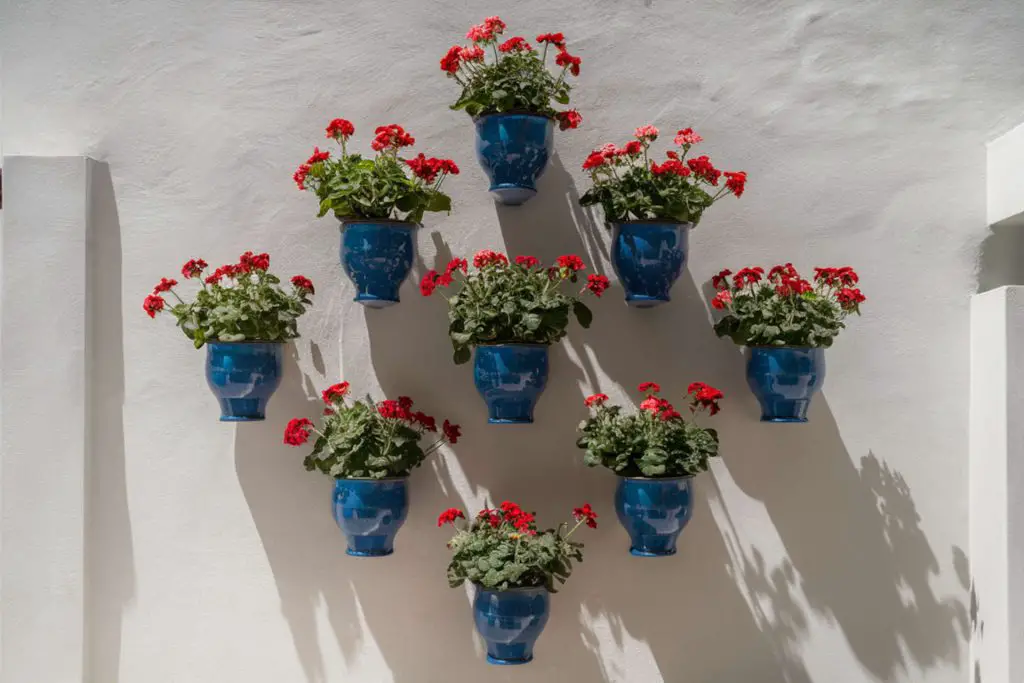
The objective then is to turn you into a plant pot matchmaker. To do so we’ll explore the variety of ceramic options available, which should help you find the perfect “fit” for your indoor and outdoor plant, so they can thrive and look fabulous while doing it!
Why Ceramic Pots Matter
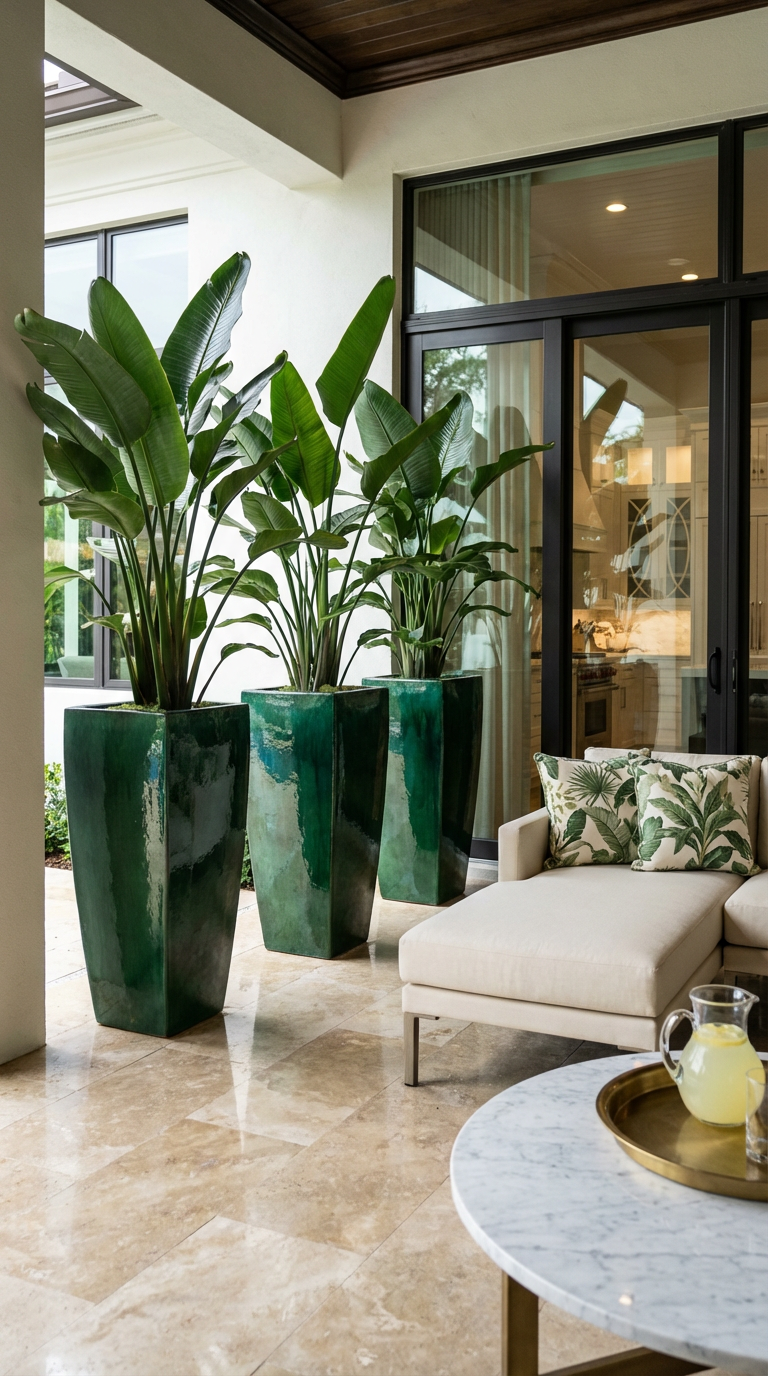
Sure, plastic pots are often convenient for container gardening. But have you ever noticed your plant seems unhappy in one? Maybe the soil stays soggy for too long, or it trails over easily. Here’s why ceramic pots can be the game-changer your plant pals need:
Breathable Pots
Unlike plastic, ceramic pots are porous. This means they have tiny holes in the material that allow air to reach the roots. Just like you need air to breathe, so do plant roots! Good air circulation helps prevent root rot, a nasty condition that happens when roots sit in soggy soil for too long. Think of it like this: fresh air is like a healthy breeze for your plant’s underground world, keeping them happy and thriving.
Weighty Champs
Plastic pots are lightweight, which can be a plus for portability. But for some plants, especially ones that grow tall or have top-heavy foliage, this lightness can be a problem. A strong gust of wind or a playful pet can easily send a plastic pot tumbling over, damaging the plant and making a mess. Ceramic pots, on the other hand, pack a punch in the weight department. Their heavier material acts like a sturdy anchor, keeping your plant upright and secure, even on windy days or when bumped by curious critters.
Style Squad
Let’s face it, plastic pots lack a certain something, shall we say? They come in a limited range of colors and styles, and let’s be honest, they can look a bit…well, boring. Ceramic pots, however, are like the ultimate outfit for your plant. They come in a dazzling array of colors, from classic terracotta to bold turquoise, and patterns galore. Whether you prefer a sleek, minimalist look for a modern space or a rustic, textured pot for a bohemian vibe, there’s a ceramic pot out there to perfectly complement your plant and your home decor. Think of it as the finishing touch that elevates your plant from basic to beautiful, adding a pop of personality to any room.
The Indoor Scene: Picking the Perfect Plant Partner
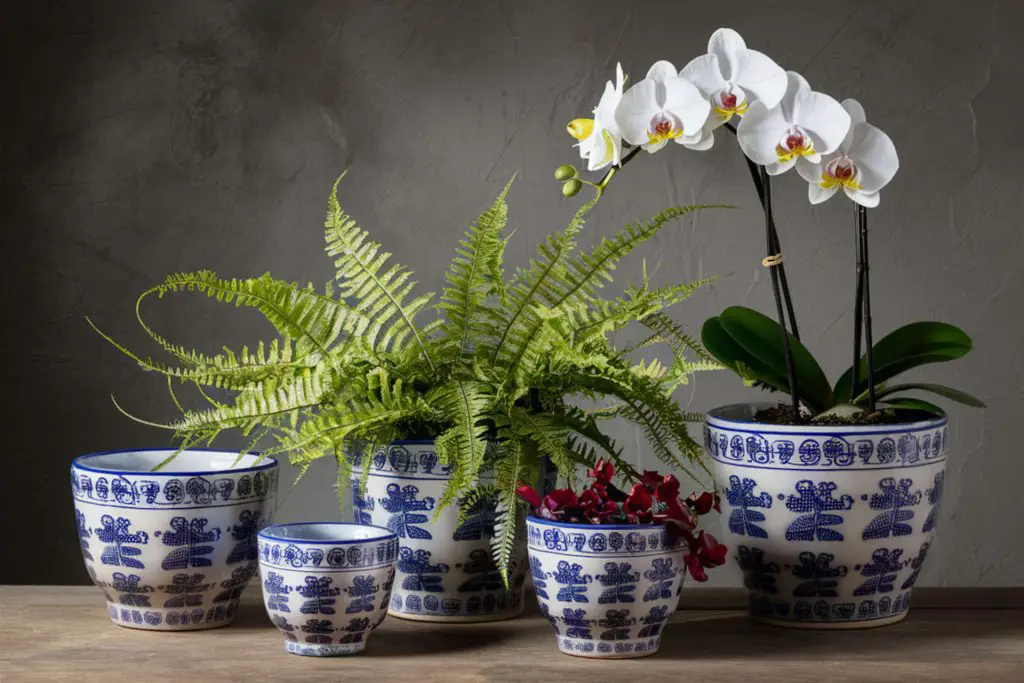
Now that you know the benefits of ceramic pots, let’s dive into finding the ideal match for your indoor plant babies. Here are some key things to consider:
Terracotta Time
If your plant dislikes wet feet (cacti, succulents), terracotta is your best friend. This porous material absorbs excess moisture from the soil, helping to prevent root rot.
Glazed and Gorgeous
For plants that love moisture (peace lilies, ferns), glazed ceramic pots are a great choice. The glaze creates a barrier that helps retain moisture in the soil. Plus, glazed pots come in a fantastic range of colors and styles, allowing you to find one that complements your plant and your decor.
Drainage Dilemmas
Some ceramic pots don’t have drainage holes. While these can be beautiful, they require a bit more care to avoid overwatering. Here are two solutions:
- Saucer Squad: Use a pot with a saucer underneath. Place the pot on pebbles in the saucer. This allows excess water to drain away from the roots without making a mess.
- Liner Life: Use a plastic liner pot inside the ceramic pot. This allows for drainage while keeping the beautiful ceramic pot on display.
Matching Personalities
Now for the fun part – choosing a pot that reflects your style and your plant’s personality! Think about the overall look of your space. Do you prefer a modern, minimalist vibe? A sleek, white pot might be perfect. Or maybe your style leans more bohemian? A rustic, textured pot could be a great choice. Consider your plant’s appearance too. A trailing vine might look stunning in a hanging pot, while a bold architectural plant could be showcased in a brightly colored pot.
Outdoor Spaces: Picking Pots for Sun and Rain
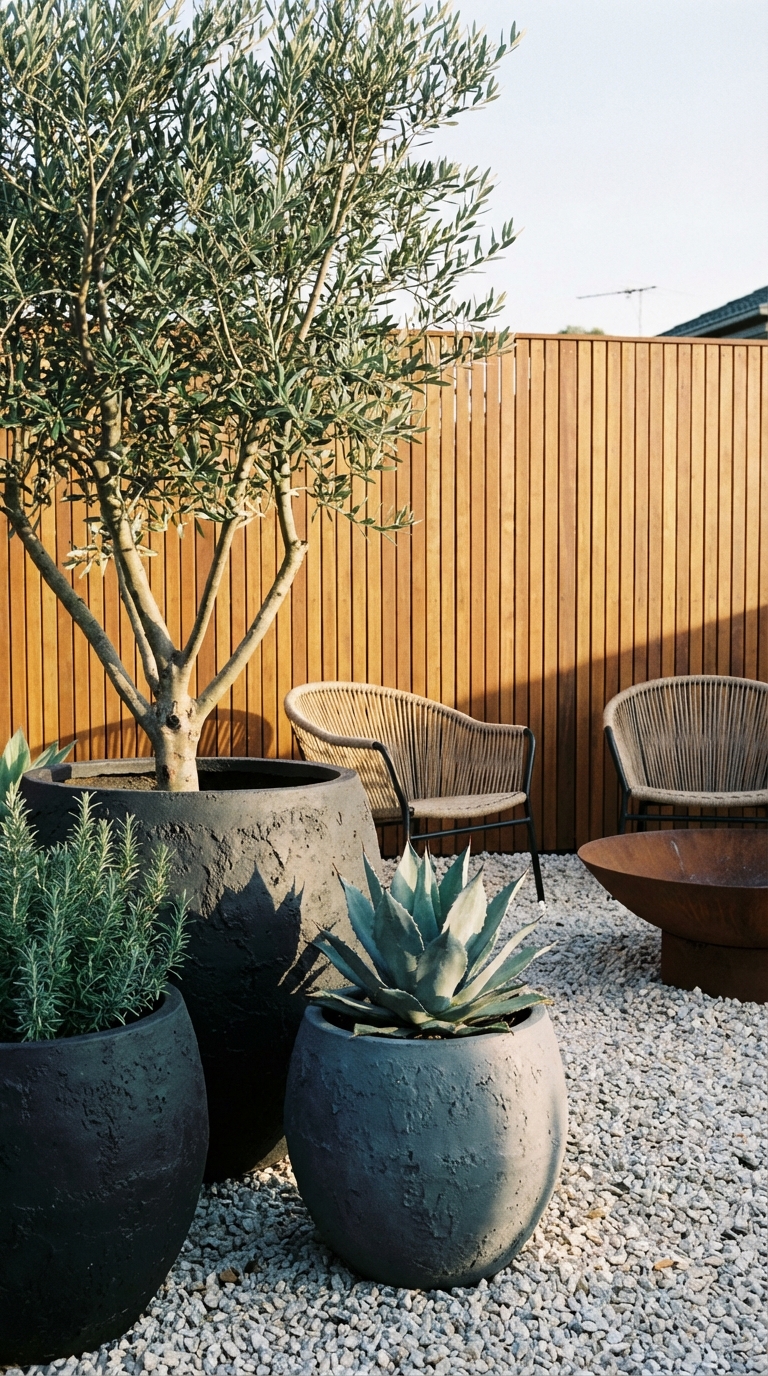
Taking your plant love outdoors? Here’s what you need to know about choosing the perfect ceramic pot for your leafy companions:
Material Matters:
Not all ceramic pots are created equal for outdoor use. Here’s why choosing the right material is important:
Frost Fighter:
Regular terracotta pots can be a great choice indoors, but they’re not the best for outdoors in cold climates. Stick with frost-resistant materials like glazed ceramic or stoneware for your outdoor plants. These materials are denser and less likely to absorb water, so they can withstand freezing temperatures without cracking.
Drainage is Key
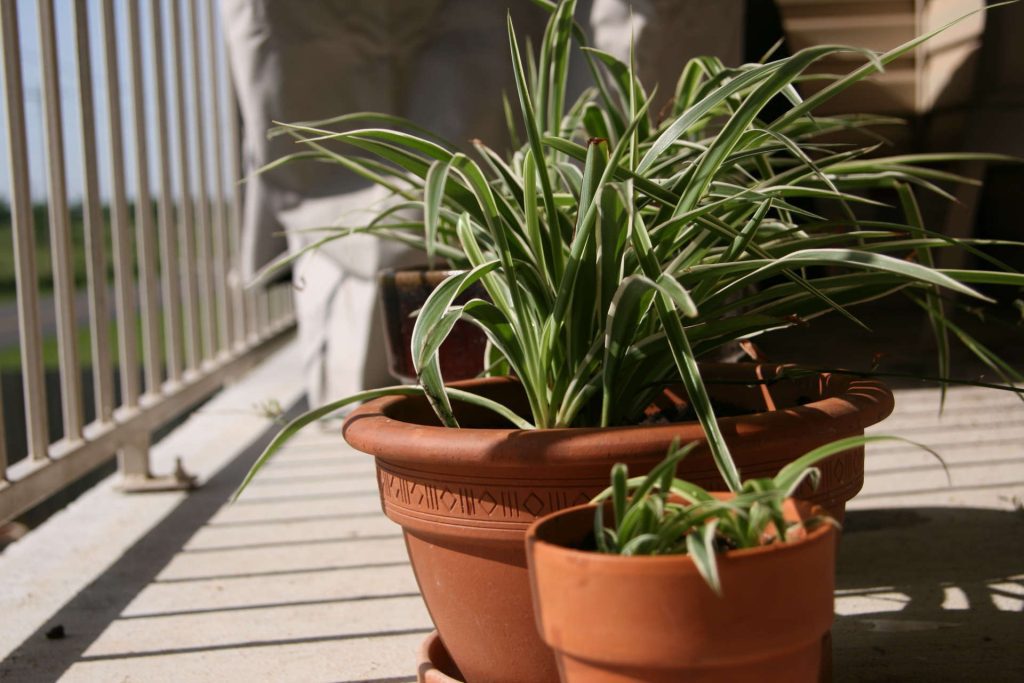
Just like indoors, good drainage is crucial for outdoor plants. Here’s why:
Handling Rain:
Mother Nature provides plenty of hydration, but sometimes it can be a little too generous. Heavy rain can saturate the soil in a pot, leading to root rot. Root rot is a nasty condition where the roots suffocate due to lack of oxygen. Drainage holes in your pot allow excess rainwater to escape, preventing the soil from becoming waterlogged and keeping your plant’s roots happy and healthy.
No Pool Parties Allowed:
Even without heavy rain, overwatering can still happen outdoors. Drainage holes prevent water from pooling at the bottom of the pot, which can also lead to root rot. With good drainage, any extra water will drain away, allowing for proper aeration around the roots.
Creative Drainage Solutions:
Love the look of a ceramic pot without drainage holes? Don’t worry, you can still use it outdoors with a little creativity:
- Double Duty: Use the ceramic pot as a decorative planter around a plastic liner pot with drainage holes. Plant directly in the liner pot, and place it inside the ceramic pot. This allows excess water to drain from the liner pot while keeping the beautiful ceramic pot on display.
- Pebble Power: If you can’t use a liner pot, add a layer of pebbles to the bottom of the ceramic pot before adding soil. The pebbles create a space at the bottom of the pot for excess water to collect, preventing it from reaching the roots. Note: This method requires carefully monitoring the water level and removing any water that accumulates in the bottom of the pot after watering.
Size It Up: When Choosing a Pot Size for Outdoors, Bigger Is Often Better. Here’s Why
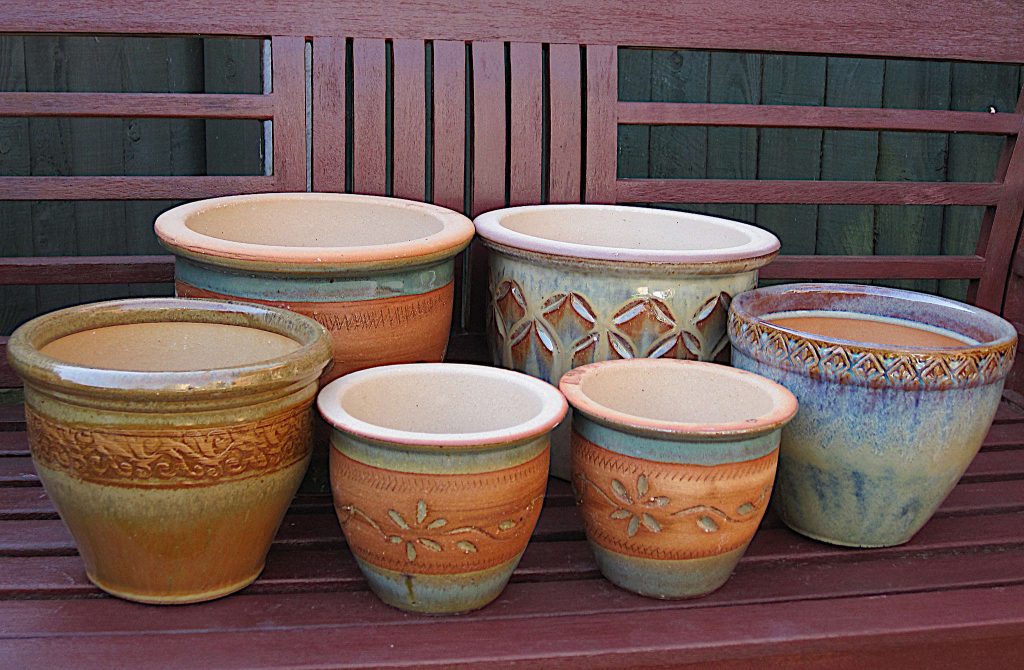
Room to Grow:
Unlike their indoor counterparts, outdoor plants tend to grow larger and faster due to increased sunlight and potentially more space for their roots to explore. A pot that was perfectly sized for your plant indoors might become restrictive outdoors, hindering its growth potential, so you are likely to need to start considering larger pots. Choosing a pot that’s at least 2-3 inches wider in diameter than the current pot gives your plant ample space to develop a healthy root system, which translates to stronger growth and better overall health above ground.
Stability Matters:
Outdoor plants are exposed to the elements, including wind and rain. A pot that’s too small for a plant can easily tip over in strong winds, damaging the plant and creating a mess. A larger pot provides better stability, acting like a sturdy anchor that keeps your plant upright and secure, even on windy days.
Moisture Management:
Believe it or not, pot size can also play a role in moisture management. A larger pot with more soil holds onto moisture more effectively than a smaller pot. This can be beneficial in hot, dry climates where plants need more consistent moisture at their roots. However, in cooler or wetter climates, a larger pot might retain too much moisture, so consider your local climate when choosing a pot size.
By selecting a pot that’s the right size for your outdoor plant, you’re giving it the foundation it needs to thrive in its new environment. It will have ample space for root growth, better stability in windy conditions, and improved moisture management depending on your climate.
Style Inspiration
There are endless possibilities when it comes to styling your outdoor space with ceramic pots. For a pop of color, choose brightly glazed pots for your patio. Classic terracotta pots create a timeless look for a Mediterranean-inspired garden. Think about the overall feel you’re going for and choose pots that complement your plants and your outdoor décor.
Finishing Touches: Keeping Your Plant Pals Happy
Having found the perfect ceramic pot for your plant, here are a few other things to consider for optimal plant health:
- Weight it Out: Remember, ceramic pots can be heavy, especially in larger sizes. Consider the weight of the pot, both empty and filled with soil, when choosing a location. Make sure the surface you place it on can support the weight.
- Sun Sense: Different plants have different sunlight needs. Think about the amount of sunlight your plant receives in its chosen spot and choose a pot material accordingly. For example, darker colored pots can absorb more heat, which might be ideal for sun-loving plants in cooler climates. Lighter colored pots reflect more heat, which can be beneficial for plants that prefer some shade.
- Drainage Do’s and Don’ts: If your pot has a drainage hole, avoid placing it directly on a surface that could be damaged by water (like wood floors). Use a saucer underneath the pot to catch any excess water that drains out. Remember: Don’t let your plant sit in water – empty the saucer after watering.
With the right ceramic pot, proper watering habits, and a little attention to sunlight and weight, your plant companions will be thriving and looking fabulous in no time! Feel free to share pictures of your plant makeovers using your new ceramic pots – tag us on social media and inspire other plant lovers!
DIY Project – Personalize Your Plant Pots!
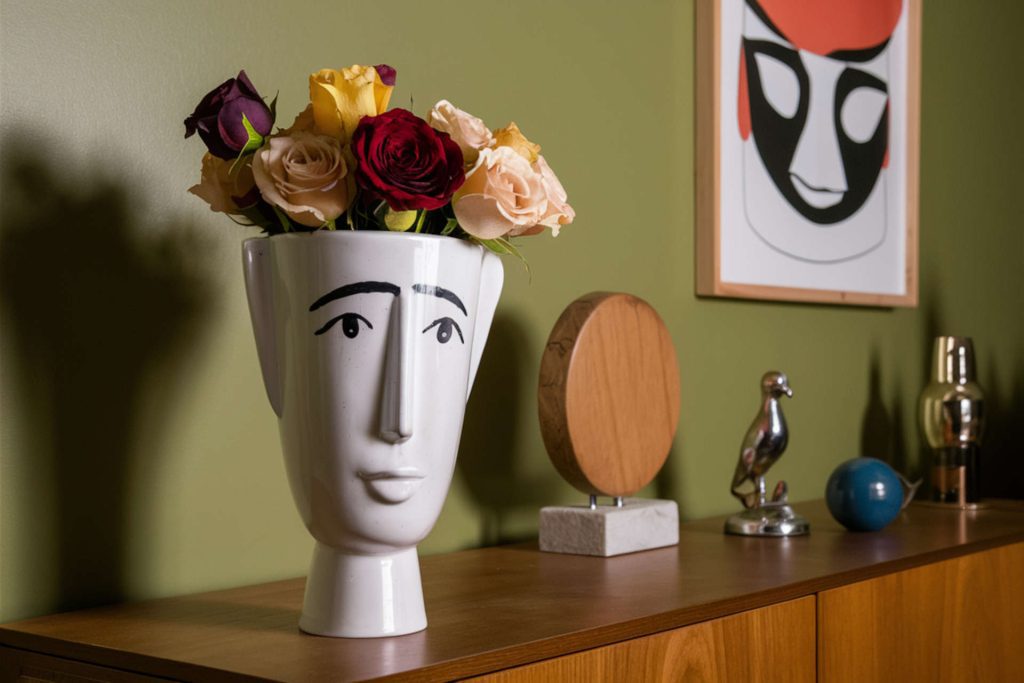
Want to add a unique touch to your new ceramic pots? Here’s a simple DIY project to personalize them and showcase your creativity:
What You’ll Need
- Acrylic paint in various colors (choose colors that complement your plant and decor)
- Paint brushes (different sizes for details and larger areas)
- Painter’s tape (optional, for creating clean lines)
- Pencil (for sketching your design, optional)
- Clear sealant spray (optional, to protect your artwork)
Instructions:
- Clean and dry your ceramic pot. Make sure there’s no dirt or dust on the surface for better paint adhesion.
- Plan your design (optional). You can freehand a design or lightly sketch an idea with a pencil first. There are endless possibilities! Geometric patterns, polka dots, stripes, or even stencils with words or plant-related images are all great options.
- Apply painter’s tape (optional). If you want crisp lines for your design, use painter’s tape to mask off areas you don’t want painted.
- Paint your design! Have fun and unleash your creativity. Let the paint dry completely between coats.
- Seal your artwork (optional). Apply a light coat of clear sealant spray to protect your painted design, especially if the pot will be outdoors. Let the sealant dry completely before using the pot.
Voila! You’ve transformed your ceramic pot into a one-of-a-kind piece of art that perfectly complements your plant and adds a personal touch to your home decor.
